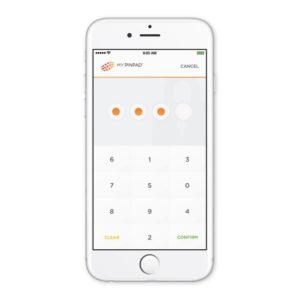By
David Poole, MYPINPAD

Consumers are carrying less
cash than ever before. This poses a challenge for the five million small
merchants in the UK that are still unable to accept card payments. They risk
losing sales, as cashless consumers often abandon their shopping if the
merchant is unable to accept card payments.
This issue has spurred a lot
of competition to deliver a new generation of versatile payment technologies.
However, with many new solutions coming into the payments market, confusion has
crept in regarding terminology and the benefits of different technologies.
PIN On Mobile And PIN On Glass Are Not The Same
A case in point is the
conflation of the terms “PIN on Glass” (PoG) and “PIN on Mobile” (PoM). I often
see the terms incorrectly treated as synonyms, as if the technologies they
describe are essentially the same thing — which they are not.
PoG and PoM are distinct
technologies with their own features and benefits. Failure to understand the
differences between them could mean merchants may not get the payments solution
that is right for their business.
What Exactly Is The Difference Between PoG And PoM?
PoG describes the evolution of
POS technology and has been around for a long time — traditional payment
terminals that have developed from buttons to a glass-based capture mechanism
(i.e. a touch screen). These traditional PIN on Glass solutions are expensive
and offer no additional functionality when compared to traditional button-based
POS devices.
Some PoG terminals, sometimes
referred to as a smartPOS, are locked down hardened Android purpose-built
devices that are expensive to manufacture and restricted to one device.
PIN on Mobile, however, is an innovative technology
designed to offer merchants a cost-effective avenue to card payment acceptance,
whilst delivering the same security standards as a traditional POS terminal.
PoM enables merchants to use a Consumer off-the-Shelf (COTS) device, such as
smartphones and tablets, instead of expensive specialized POS terminals. With
PoM a consumer inputs their PIN directly in to the merchants COTS device, with
just a small additional piece of equipment to read the card chip (Secure Card
Reader). This is more cost-effective than a traditional terminal, resulting in increased
adoption.
How Secure Is PIN On Mobile?
In addition to low implementation costs, PoM offers
fantastic security credentials. The recently launched PCI SSC standard for PoM
ensures a universal gold standard for secure transactions via PoM. A secure,
PCI SSC-compliant PoM system ensures that, when the customer’s PIN is entered
into the phone or tablet it is isolated and protected immediately — as
recommended by the latest PCI SSC standard for Software-based
PIN Entry on COTS (SPoC). As a
result, merchants can ensure that their customers are able to pay for their
goods or services securely, without worrying about their payment details being compromised.
With such solutions, merchants can benefit from the same high level of security
offered by traditional POS equipment, without the same expense.

Improving Understanding
Hopefully, this sheds some
light on the key distinguishing features of these two very different pieces of
technology. Each offers its own benefits to meet specific merchant needs and
enable them to continue to meet their customers’ changing payment requirements.
David Poole is the Global
Head of Mobile POS Solutions at MYPINPAD
and is an executive with 20 years at the forefront of new technology and
payment processes in the UK and USA. Prior to joining the MYPINPAD team in 2013,
Poole was Managing Director at mPOS technology company, Miura, founded to
reshape electronic payments and where he oversaw the commercial success of the
company for three years.






